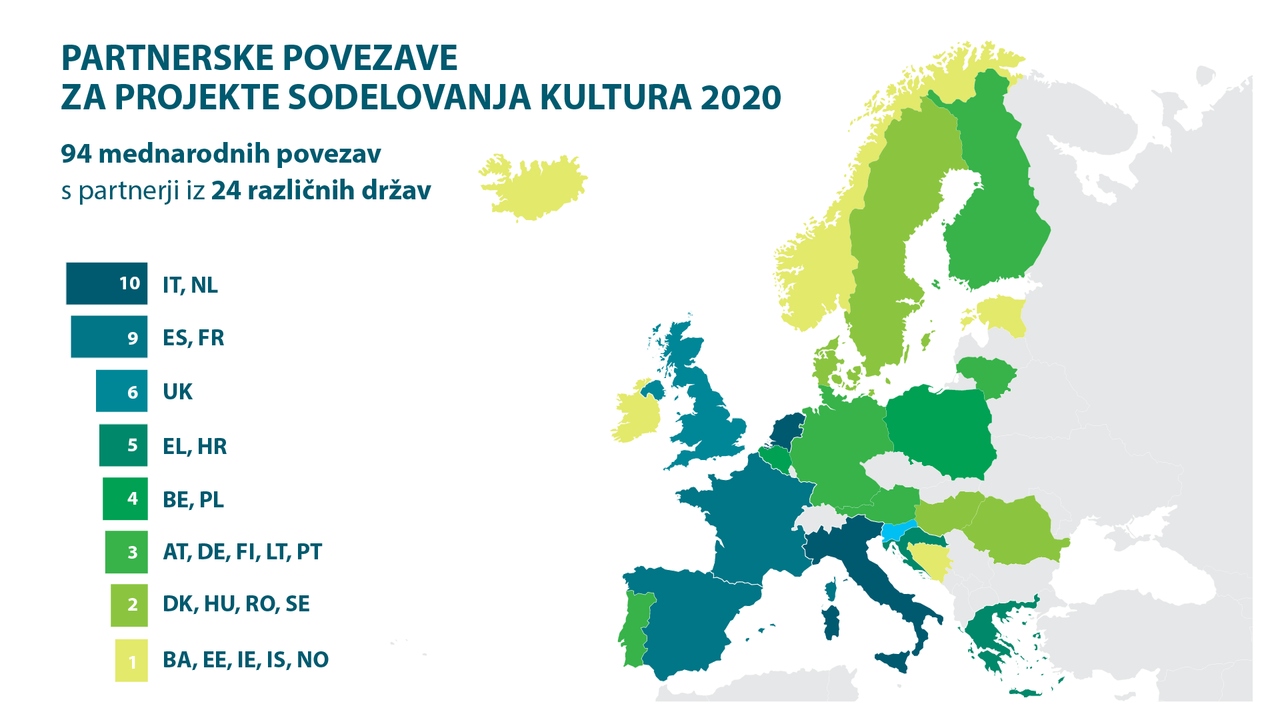Year 2017 once again a record year for Slovene producers
Each year in October a few hundred cultural organisations from across Europe (and beyond) suddenly become very busy (well, even more so than usual anyway). That is when the due date for applications for the Creative Europe Cooperation Projects starts nearing, bound to significantly turn the international fortunes of these organisations.
To sum it up very briefly, Creative Europe is a 7 years long and 1.46 billion euros worth EU programme for the cultural and creative sectors for the years 2014-2020. It is meant to foster cross-border cooperation, to encourage the circulation of creative works and the mobility of cultural players; all in all, to support the creation of a shared European cultural space. The programme is divided into two parts, MEDIA and CULTURE, with the later being further divided into European Platforms, European Networks, Literary translation, and Cooperation Projects. The latter is the one that just recently presented the result from last autumn, when the roughly 35,5 million euros was at stake. And, in yet again a nothing less than stunning performance of administrative-genius, Slovene cultural organisations managed to clinch no less than 1,2 million.
However, such a performance was a surprise only relatively. In the words of Peter Inkei of the Budapest observatory, when analysing the results between 2014 and 2016, "Slovenia is the incontestable east-central European champion in the Creative Europe programme." Well, in 2017 he reiterated himself: "the champion is again Slovenia with a 35% success rate". What does that actually mean?
Out of 548 applications (with the corresponding 548 project leaders), 81 projects were chosen to be financed from 2017 onward (each can last up to 48 months, but typically its about 24 months or so). Of these 548 20 came wit a Slovene leader, with 7 of them being successful. This is about three times better than the average, and another 9 projects with 10 slo organisation as partners (which is, by the way, the prefarable position in terms of the funds/responsibility-and-drama trade-off). What Inkei rhetorically says is "are Slovenes born cultural managers? "
That we do not know about the genetic factor, but what is surely one of the important aspects is the obviously rather impressive competence of the Creative Europe Desk Slovenia. It is a small NGO whose skills has recently even been exported, as one of the past Creative Europe participants mentioned that they've actually brought the project leader into Slovenia for discussion. Thus, it is a pleasure for this portal Culture.si that together with them we are running a a data mining and interoperability project by which we annually graphically and interactively present the result.
70 povezav v 26 državah
EU funding, an interactive approach
This graphic and interactive visualisation represents the data related to the EU funding for culture, film and audiovisual media raised by Slovene organisations in the period 2000–2017. The programmes have been called different names (Culture 2000, MEDIA Plus, Culture, MEDIA and Creative Europe programmes) and creative Europe is a fairly recent creation).

- Organisations by status
- Public
- Private
- Projects by field
- film and audiovisual projects
- interdisciplinary projects
- multimedia and new technologies
- books and reading / literary translation
- cultural heritage
- architecture, design and applied arts
- performing arts (theatre, dance, music)
- visual arts
- Organisation's role in the project
- beneficiary
- co-beneficiary
Currently, 2017 has only the results for Cooperation Projects, with each square representing one participant, linking to his profile on dotični portal. Each article about a recipient of either EU Culture or MEDIA grant now includes also a complete list of projects.
You can see the distribution by art field, yet also by the role in the project (leader/partner) and – interestingly – if the organisation is a public one or a private one (typically a ngo). And this can already be discerned, 2017 is the year when public institutes have almost caught up with the previously much more industrious ngo sector. What are the reasons for this and if the still austerity is of any guide is a speculation better left to others.
List of Creative Europe 2017 participants
- Aksioma Institute
- City of Women Association for Promotion of Women in Culture
- Department of Art History, University of Ljubljana
- Federacija Institute
- Gallus Foundation
- Goga Publishing House
- House! Society for People and Spaces
- Institute for the Protection of Cultural Heritage of Slovenia, Maribor Regional Office
- Kino Šiška Centre for Urban Culture
- Ljubljana Puppet Theatre
- Ljudmila Art and Science Laboratory
- Maribor Art Gallery
- Moderna galerija (MG)
- MoTA Museum of Transitory Art
- Pionirski dom Youth Culture Centre
- Sodobnost International Cultural Society
- Technical Museum of Slovenia
All the organisations
- A list of Slovene organisations funded by the Creative Europe Programme - section Culture 2014-
- A list of ALL Slovene organisations ever funded by the Culture and MEDIA Programmes
See also
External links
 <small class="imgdesc">The infographic featuring the international impact of 18 successful producers from Slovenia who have received the Creative Europe funds in 2020 for cooperation with 94 partners from 24 countries!ration with 94 partners from 24 countries! +
<small class="imgdesc">The infographic featuring the international impact of 18 successful producers from Slovenia who have received the Creative Europe funds in 2020 for cooperation with 94 partners from 24 countries!ration with 94 partners from 24 countries! +

